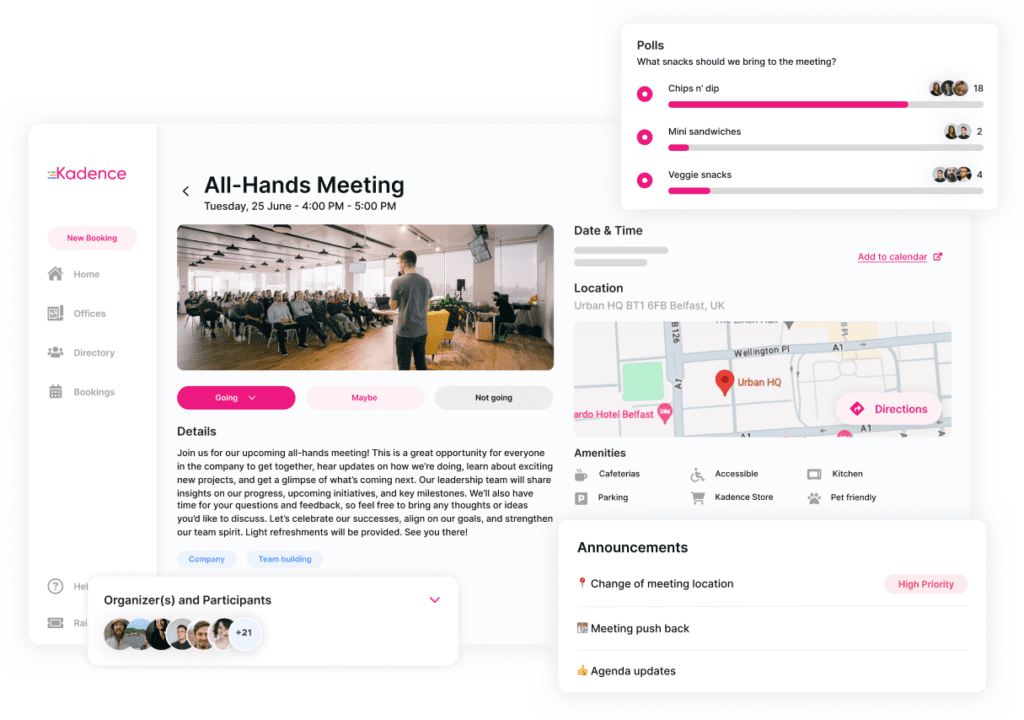When I sat down with David Music from WTW, a company known for its innovative approach to workplace, it quickly became evident that navigating the hybrid workspace is anything but straightforward. Our conversation highlighted the importance of nuanced strategies that organizations must consider to create a successful hybrid working model.
The Evolving Role of Workplace Leaders
David and I began our discussion by reflecting on the changing nature of roles in real estate, facilities, and workplace experience. Historically, these roles were more numbers-focused, concentrating on the practical aspects of managing physical spaces. But today, these positions have evolved to require a more holistic approach. It’s not just about managing the physical workspace; it’s about understanding people, culture, and how work itself is changing.
David’s journey reflects this shift. He brings a combination of skills that are increasingly in demand—bridging the gap between traditional real estate management and a deeper understanding of human-centered design. This shift is particularly crucial in hybrid environments where organizations are trying to balance in-office presence with remote work flexibility.
Navigating Comfort Zones and Change
David shared a candid perspective on the challenges of transitioning to a hybrid model. One of the most significant hurdles is managing people’s comfort levels with change. He emphasized that some individuals naturally adapt to change, while others find it more challenging. This reality has been magnified by the seismic shifts in how and where work is conducted.
In this landscape, leadership skills, particularly in persuasion, are critical. Leaders must engage in mature, honest conversations, acknowledging the complexity and discomfort of the new working model while fostering an environment where change is embraced rather than resisted. It’s not about pushing people back into the office; it’s about navigating the new complexities of work in a thoughtful and supportive manner.
The Critical Role of Culture in Hybrid Success
One of the key takeaways from our discussion was the importance of culture in determining the success of hybrid work models. David noted that organizations that understand the cultural dynamics of hybrid work are more likely to succeed. These companies recognize that people need more than just a space to work—they need a purpose to gather, connect, and collaborate.
The difference between a thriving hybrid workplace and one that struggles often boils down to the organization’s ability to manage these cultural shifts. Some teams may struggle, leading to employee turnover and a general sense of uncertainty about what work should look like. Others, however, navigate these changes with more finesse, maintaining a positive hybrid dialogue that supports employee retention.

Building a Rhythm in Hybrid Work
Rather than adopting a one-size-fits-all model, WTW recognizes the need for flexibility across different markets and regions. This flexibility acknowledges that each team or location might have different needs or preferences when it comes to in-office versus remote work.
We talked about the behaviors and preferences of employees inform decisions about how workspaces are used. They understand that meaningful in-person interactions are vital, but they also recognize that forcing these interactions can backfire. Instead, they let patterns emerge organically, observing which days are busiest, what types of work are done best in the office, and when remote work is more suitable. This approach fosters a natural momentum that can be built upon, rather than relying on rigid mandates.
Redefining the Purpose of the Office
Interestingly, WTW manages its office space using Kadence quite unconventionally. David shared that they don’t rely on a desk booking system. Instead, they focus on helping teams connect on timings to ensure people know who will be present and when. This method supports spontaneous collaboration and community-building activities, which are crucial for fostering a sense of belonging and engagement among employees.
The purpose of the WTW office has shifted. It’s no longer just a place to work; it’s a hub for connection, creativity, and shared experiences. This redefinition is critical as organizations seek to create compelling reasons for employees to choose the office over remote work, without mandating their presence.

Sharing the Experience
Toward the end of our conversation, I asked David what had been learned in their hybrid journey. He highlighted the importance of three key factors: senior leadership alignment, effective change management, and clear communication.
David stressed that having senior leadership fully aligned with the hybrid work strategy is essential. When leaders are on the same page, they can provide a unified message and support throughout the organization, making it easier for employees to adapt.
Change management is not just about project management. It’s about guiding people through the transition with empathy and support. This includes anticipating resistance, addressing concerns proactively, and providing the resources needed to adapt.
Finally, communication emerged as a critical component. David emphasized the importance of continuous and transparent communication throughout the organization. This involves not just sharing the vision for hybrid work but also listening to employees’ feedback and adjusting strategies accordingly. It’s about creating a dialogue rather than delivering a monologue.

How Kadence Can Help Hybrid Teams Thrive
Reflecting on my conversation with David, it’s clear that successful hybrid work is about more than just policies and procedures: it’s about people. Organizations need to find a balance between flexibility and structure, creating an environment where employees feel empowered to choose how and where they work.
This is where tools like Kadence come in. Kadence offers a suite of features designed to support hybrid teams. Whether it’s managing in-office schedules, coordinating team activities, or fostering a sense of community and belonging, Kadence provides the technology needed to navigate the complexities of hybrid work.
By using Kadence, organizations can create a more connected, engaged, and productive workforce. It’s about making hybrid work not just possible but enjoyable, aligning people, spaces, and technology in a way that fosters collaboration, creativity, and growth.
If you’re looking to make hybrid work a success for your team, consider how Kadence can help you build a workplace that truly works for everyone.




